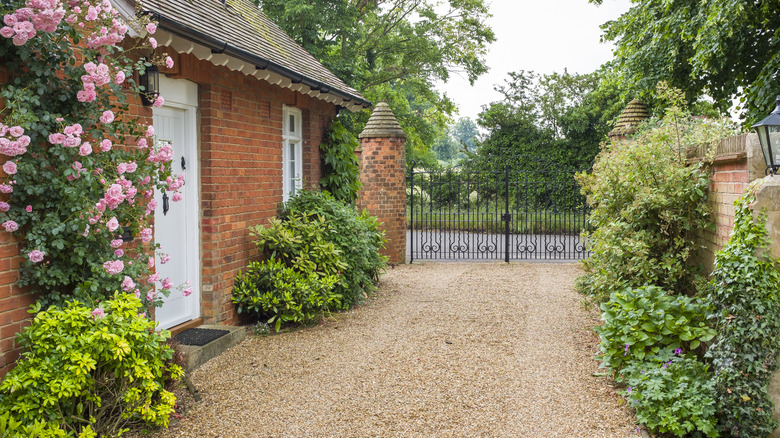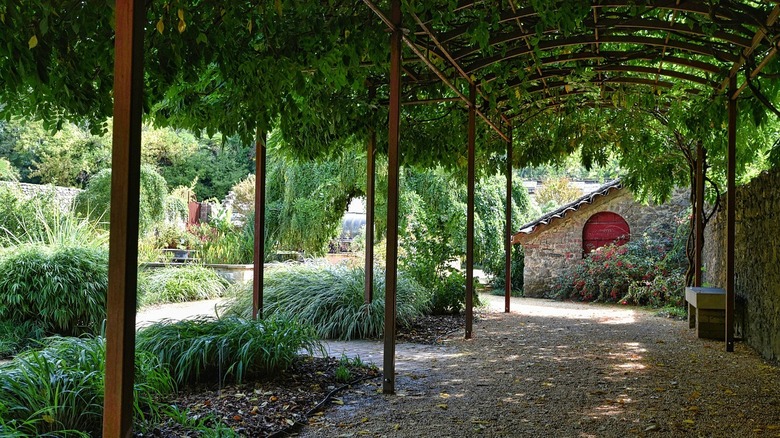What To Know Before Using Self-Binding Gravel In Your Landscaping
When choosing a gravel material for a walkway, path, or driveway, there are several popular gravel types to consider before landscaping your yard or garden. Although gravel offers several benefits, loose gravel can be unstable, weeds can grow through, and erosion is a problem. Loose gravel requires maintenance to keep it in place and looking good. Self-binding gravel is an alternative that offers a more stable surface and less maintenance. There are a few things to know before using self-binding gravel in your landscaping. While this material is good for many applications, it is not suitable for properties with steep slopes and can be damaged by heavy traffic and large vehicles. Seeds can still grow through and the gravel can get picked up on your shoes and tracked inside the house.
This type of aggregate is a mixture of small gravel, sand, and clay. The mixture is compacted to bond the materials together and create a solid, stable surface. The process starts with digging out the path or area where self-binding gravel will be used. After the self-binding gravel is laid in place, a vibrating roller is used to compact the gravel and bind the material together. Before using this type of gravel in your landscaping project, it is helpful to consider the benefits and drawbacks of self-binding gravel.
Benefits of self-binding gravel
This aggregate is often used in home landscaping, including all the ways you can use gravel in your yard. Commercial properties use it for golf courses, bicycle paths, nature trails, and walkways. Some homeowners even use it to create a more durable patio. Self-binding gravel offers several advantages for landscaping projects, compared to loose gravel.
Self-binding gravel is compacted to provide a solid, smooth surface that is more stable, whether you will be walking or driving on it. Although the surface is firm, it is not as solid as concrete, which means water is better able to drain. The material is available in a variety of natural colors that blend well with the surrounding landscape. The color depends on the type of gravel in the mixture and options include shades of gray, blue-gray, beige, gold, black, and brown.
This type of gravel surface requires less maintenance compared to loose gravel paths and walkways. The compacted material stays in place better and won't be washed away in a heavy rainstorm. In addition, weeds are less of a problem with compacted self-binding gravel than with a traditional gravel walkway. As a result, you will spend less time weeding and replacing gravel.
The drawbacks of self-binding gravel
No type of surface is entirely perfect for every situation, and there are drawbacks to using self-binding gravel on your property. While this material is a good option for many applications, it is not the right choice for every project. For example, the material is not suitable for use on steep slopes, due to difficulty compacting the material and erosion on steeper inclines.
You can drive on self-binding gravel, and it can be used on driveways and parking lots. However, heavy machinery should not be used on this type of surface. Because it is a softer material, it cannot withstand the load of heavier vehicles and could be damaged by heavy equipment. Large or heavy vehicles can harm the surface, or the gravel can get knocked loose and displaced.
While this type of gravel requires less maintenance, it is not maintenance-free. Unless some type of weed control material is laid under the gravel, weeds can still pop up occasionally, so these will need to be periodically removed. Another potential drawback is picking up the loose material on your shoes and tracking it into the house, which can happen because the surface is not completely hard and solid. Be sure to have a place for people to wipe their feet before coming inside.


